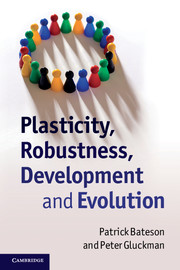Book contents
- Frontmatter
- Contents
- Preface
- Acknowledgements
- 1 Setting the scene
- 2 Clarifications
- 3 Developmental robustness
- 4 Plasticity
- 5 Integration of robustness and plasticity
- 6 Current function of integrated developmental processes
- 7 Evolution of developmental processes
- 8 Impact of developmental processes on evolution
- 9 Development and evolution intertwined
- References
- Index
6 - Current function of integrated developmental processes
Published online by Cambridge University Press: 05 August 2011
- Frontmatter
- Contents
- Preface
- Acknowledgements
- 1 Setting the scene
- 2 Clarifications
- 3 Developmental robustness
- 4 Plasticity
- 5 Integration of robustness and plasticity
- 6 Current function of integrated developmental processes
- 7 Evolution of developmental processes
- 8 Impact of developmental processes on evolution
- 9 Development and evolution intertwined
- References
- Index
Summary
The focus in this chapter is on explaining the current benefit to the individual of possessing those characteristics of integrated development that were discussed in the previous chapter. If an individual deviates significantly from the adapted norm or, because of changes in local circumstances, its characteristics no longer match the requirements of the environment, then a measurable loss of benefit should result. If no such loss occurs, then arguably that character has no current utility in terms of survival or reproductive success. Monaghan (2008) has carefully reviewed the types of experiments that distinguish between the competing hypotheses attempting to address these issues.
We discuss first the utility of maintaining the form and coherence of the whole body. We then turn to the utility of ‘coping’ mechanisms, and then to the special importance to survival and reproductive success of the plastic processes that operate early in life and that generate relatively robust phenotypes. The benefits may accrue long after cues from the environment or the mother have established a particular trajectory for development. Behavioural plasticity continues into adult life and, in the instances of the many forms of learning, the benefits to the individual can be clear-cut. Sometimes phenotypes established by plastic mechanisms are poorly matched to the environment in which the individual finds itself. These cases, which are important in understanding loss of health in humans, might seem like a challenge to the notion of utility.
- Type
- Chapter
- Information
- Plasticity, Robustness, Development and Evolution , pp. 63 - 80Publisher: Cambridge University PressPrint publication year: 2011



